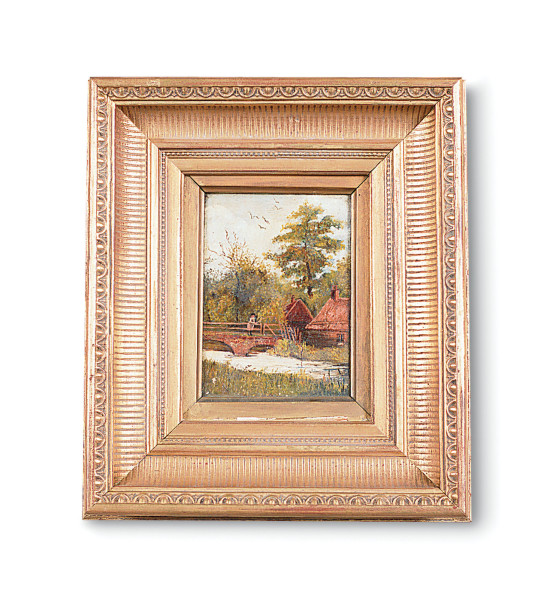
Well crafted and nicely aged, many antique frames are themselves works of art.
Linda Svendsen
Hung throughout the English cottage on Lake Oswego, framed art fills the house with personality. Traditional frames also lend a period sensibility to the interior. Which brings up the question:
Should your Victorian painting be reframed in quarter-sawn oak if you live in an Arts & Crafts Bungalow? Probably not! When it’s possible, a painting should stay in its original frame. The guiding principle in framing is generally to choose the frame for the artwork, not for the room where it will hang. Art is timeless, goes the reasoning, whereas interior decoration changes. Picture and frame create a single statement, which has integrity regardless of the setting where it hangs.

A 19th-century American genre painting with original gilded wood liner might be framed traditionally for different effects
Bruce Martin
That said, many choices exist within any range of options and in every period. Even in the past, collectors framed according to fashion and personal taste. The size of matting and frame, mat color, a fabric-covered or stained liner, and even gilding varies. Whether or not the framing technique and materials chosen are historical or contemporary, a frame should complement the picture—and the frame should not overwhelm the art or call too much attention to itself.
Visit museums and art galleries and pay attention to the frames. (Art is often hung in its original frame—it may say on the curator’s label.) Soon you’ll associate heavy black frames with Dutch and Flemish genre scenes, elaborate gilded frames with French landscapes, heavy flat oak frames with Arts & Crafts woodcuts. You may notice that frames for drawings are traditionally narrower than frames for paintings. The effect of the silk or paper mat, depending on size and color, will be apparent. Local art galleries or dealers can advise on frame design and recommend local framers.
The mat protects a picture from touching the glass, and creates a surround that increases the size and impact of the piece. Neutral mats don’t intrude on the frame or the picture, and won’t clash with the wall color. Generally, the bottom of the mat should be deeper (wider) than the top to avoid the optical illusion of the art falling in the frame.
Perhaps the biggest mistake householders make is hanging pictures too high. The focal point or center of the picture should be at average eye level, and perhaps even lower in a seating area or dining room.







